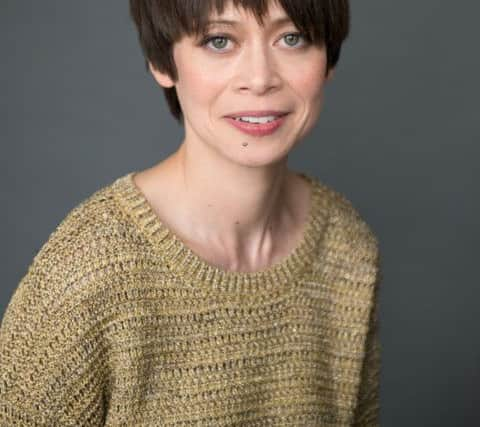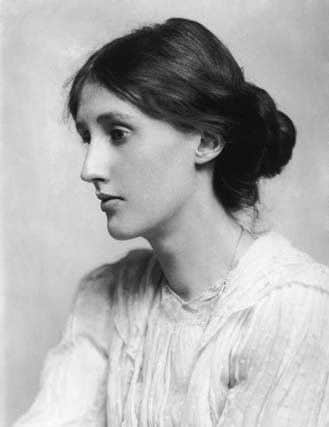Why are so many female authors portrayed as eccentric, lonely spinsters?


Charlotte Brontë is perhaps the most famous of all of Yorkshire’s daughters. But how well do we really know her? The recent BBC drama, To Walk Invisible, presented her as a prim, rather joyless young woman, cooped up in her father’s Haworth parsonage with fellow author sisters, Anne and Emily, and their unstable brother Branwell.
Growing up in York – with a mother who loved the Brontës so much that she named me after one – I had been raised on just this kind of image of Charlotte: the eldest of a trio of isolated sisters, so dependent on each other artistically that they had little need to seek the friendship of other writers beyond the confines of their home.
Advertisement
Hide AdAdvertisement
Hide AdMy own journey to authorship led me into a close collaboration with fellow writer Emma Claire Sweeney. We were fortunate to meet back when we were each just beginning to put pen to paper, and have helped each other ever since. Our friendship led us to question stories of the Brontë sisters’ literary isolation.


Researching the friendships between female authors for our new book, A Secret Sisterhood, we were intrigued to find that, for most of her life, Charlotte shared a close bond with fellow Yorkshire woman Mary Taylor, the late-life author of the protofeminist novel Miss Miles.
The two met in 1831, as adolescent boarders at Roe Head School in Mirfield. The pair’s relationship got off to a rocky start when Mary, a strikingly pretty girl, bluntly told Charlotte she was ‘very ugly’. Charlotte was mortified. But in time they bonded over a shared love of literature and their fondness for a good political argument.
Mary, who hailed from a radical household in nearby Gomersal, helped the then socially-conservative Charlotte to look at the world in new ways. Charlotte, a traditional Tory, was captivated by the atmosphere of lively debate that dominated Mary’s home and her influence would far outlast their schooldays. Some years after leaving Roe Head School, Charlotte returned to work there as a teacher – a job she found so mind-numbing that it led to outbursts in her private writings about the ‘fat-headed oafs’ she taught.
Advertisement
Hide AdAdvertisement
Hide AdOnce again it was Mary who pushed her friend to broaden her horizons, encouraging her to enrol as a student in Brussels, where her old Roe Head schoolmate would also be going to study nearby. It was an enormous step for a young woman in her twenties who had seen little of the world beyond her father’s parsonage.


In Brussels, Charlotte would experience the great romantic passion of her life. Here, she would fall in love with her tutor, the married Constantin Heger and this life-changing experience of forbidden love would inspire much of her future creative work. After returning to Yorkshire in 1844, Charlotte was stunned to hear the adventurous Mary announce she would be immigrating to the far-off British colony of New Zealand.
With Mary gone, Charlotte threw herself into her writing. It is a testament to the strength of the bond between them that Mary and Charlotte managed to maintain their friendship in the years to come. Though their letters took months to arrive, and sometimes failed to make it at all, their extraordinary closeness shines through the surviving correspondence.
Soon after Jane Eyre came out in 1847, Charlotte parcelled up the book and sent it on its long journey by sea. It would be almost a year before she received Mary’s verdict, in a letter that brilliantly encapsulates the women’s relationship.
Advertisement
Hide AdAdvertisement
Hide AdMary praised the novel as being ‘so perfect as a work of art’ and unlike the literary critics who’d been shocked by the supposed coarseness of the novel and its ‘anti-Christian’ nature, Mary felt the book did not go nearly far enough. ‘Has the world gone so well with you’, she scolded, ‘that you have no protest to make against its absurdities?’


Two years later, Charlotte, now a famous author, finally succeeded in pleasing her friend with the publication of the more overtly political Shirley, set during the time of the Luddite Riots. Mary even made her own appearance in the book, reimagined as the spirited Rose Yorke.
After Charlotte’s death in 1855 at the age of just 38, a bereft Mary received a request by post from another of the novelist’s literary friends. Elizabeth Gaskell, the author of Cranford, had met Charlotte in the later years of her life. She was now writing the first biography of Charlotte, and was looking for contributions from those who had known her best. Mary sent Elizabeth pages of recollections, hoping that The Life of Charlotte Brontë would vent her anger at the social restrictions she felt had held Charlotte back.
But Elizabeth, mindful of Victorian notions of propriety, instead portrayed Charlotte as a compliant woman who suffered her many hardships with acceptance. Many readers came to regard Charlotte as a saintly figure, never troubling themselves to question whether – as Mary put it – a woman of such talents should have been forced to live her life in a ‘walking nightmare of “poverty and self-suppression”’.
Advertisement
Hide AdAdvertisement
Hide AdStung by the experience, Mary often refused to cooperate with the requests of future biographers. This reticence allowed a less fully-rounded image of Charlotte to emerge and the importance of Mary’s influence on Charlotte’s writing slipped away.


Our research shows this is not unusual. Unlike the famous partnerships of Coleridge and Wordsworth, Byron and Shelley, or Fitzgerald and Hemingway, the important literary friendships of England’s most famous female authors tend to have been overlooked, distorted or even actively suppressed.
Our investigations took usfrom the cramped rented rooms in Bath, where Jane Austen endured much reduced circumstances following the death of her father, to the locked researchers’ room in the New York Public Library, which holds much of Virginia Woolf’s archive.
We found that Austen’s unlikely friendship with family governess and amateur playwright Anne Sharp – a woman of an entirely different social class – paints a more radical picture of the author of Pride and Prejudice. George Eliot’s intimate transatlantic correspondence with the American author of Uncle Tom’s Cabin, Harriet Beecher Stowe, upturns the image of the famed British novelist as a cold and aloof individual. And Virginia Woolf and fellow modernist Katherine Mansfield, too often dismissed as bitter foes, in fact developed a tempestuous but genuinely close alliance.
Advertisement
Hide AdAdvertisement
Hide AdWhen my own writer friend Emma and I first began seeking out the stories of the women who inspired our literary heroines, we had no idea what we would find. We discovered that behind every great woman is another great woman – and it is high time their stories are shared.
A Secret Sisterhood: The Hidden Friendships of Austen, Brontë, Eliot and Woolf by Emily Midorikawa and Emma Claire Sweeney is published by Aurum Press on June 1.